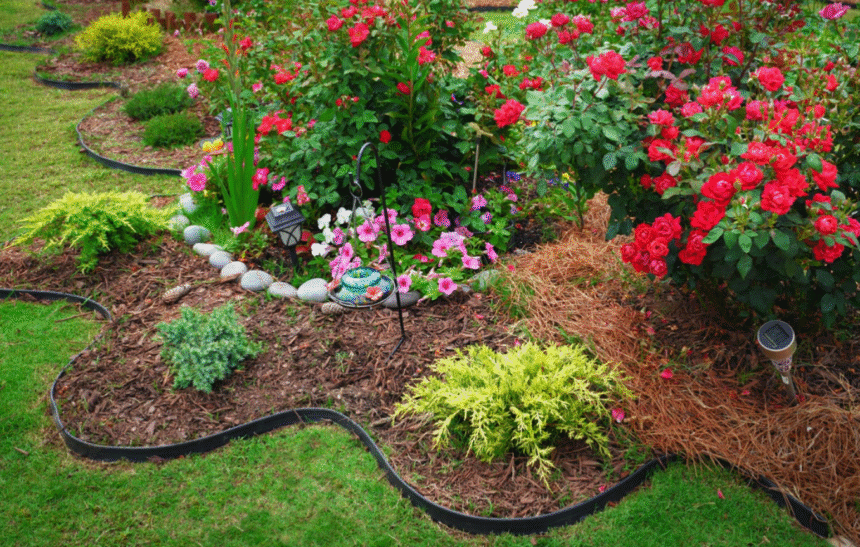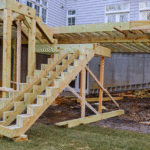Every landscaping business owner knows the hustle—early mornings, late evenings, and the satisfaction of seeing a patch of dirt transformed into a living work of art. But while you’re out there sculpting the land, is your website quietly pulling its weight behind the scenes?
If your online presence feels more like an afterthought than a digital foreman, it’s time for a change. This article explores how to make your landscaping website work as hard as you do—attracting leads, educating prospects, and turning casual browsers into loyal customers.
Why Your Landscaping Website Matters More Than Ever
Let’s be honest—word of mouth can only take you so far. Homeowners and commercial clients now begin their search for landscaping services online. If your website doesn’t immediately reflect professionalism, quality, and trust, you could lose business before you even get a call.
As a service-based business, your site must do more than look good. It needs to communicate your capabilities, show proof of your work, and guide visitors toward scheduling a consultation or calling your team. In short: it needs to work.
1. Showcase Real Projects That Build Trust
Nothing sells your expertise better than the work you’ve already completed. Instead of generic stock images, fill your portfolio with high-quality photos of past landscaping jobs—especially before-and-after transformations.
Break down the scope of each project with captions or brief narratives:
- What challenges did you solve?
- What materials were used?
- What was the client’s goal?
Even better: include a short quote from the client if you can get one. A photo and a name alongside a genuine review dramatically boost credibility.
2. Build for Mobile-First Browsing
It’s a Saturday morning. A homeowner is sipping coffee and thinking, “It’s finally time to fix this yard.” Where do they turn? Their phone.
More than 60% of local service searches now happen on mobile. If your site is slow, hard to navigate, or cluttered on a smartphone, you’ve lost the lead before they even scroll.
Use a clean layout with large, tap-friendly buttons. Avoid text-heavy pages. Make it easy to:
- View your services
- Browse your gallery
- Call or message you with one tap
A responsive site isn’t a luxury—it’s the new standard.
3. Write Like You Talk (But Keep It Professional)
Many landscaping websites fall into the trap of sounding too stiff or too salesy. Instead, think of your website copy as a conversation. You’re not shouting into the void—you’re speaking directly to a homeowner who has a messy yard and no idea where to start.
Use everyday language:
- Instead of “landscape installation and maintenance solutions,” try “we design and maintain beautiful, low-maintenance yards.”
- Replace “consultations available upon request” with “Call us today for a free walkthrough of your space.”
Stay human, stay helpful. It’s how trust begins.
4. Optimize for Search Without Sounding Like a Robot
Yes, SEO matters—but not at the expense of readability. You want Google to recognize you as a local expert, and you want people to feel like they’ve found someone they can trust.
Include important keywords like “landscaping website” naturally in your content. Don’t stuff them awkwardly. Instead, focus on answering real questions people search for:
- “How much does backyard landscaping cost?”
- “Is it better to plant in spring or fall?”
- “What are low-maintenance plants for my climate?”
When you educate and inform, search engines (and customers) reward you.
5. Use Clear Calls to Action—But Don’t Push
What do you want your site visitor to do next? Call? Fill out a form? Schedule a visit? Every page should have a clear, helpful next step. But avoid aggressive language like “BUY NOW!” or “LIMITED TIME!”
Instead, use friendly, confident CTAs:
- “Get a free estimate today”
- “Tell us about your dream yard”
- “Let’s talk about your next project”
It’s not about pressure—it’s about making the next step feel obvious and easy.
6. Keep Your Information Updated and Localized
Outdated info can tank your credibility. Review your website quarterly and check:
- Business hours
- Service areas
- License and insurance details
- New team members or awards
- Recent projects to add
Also, be sure to include local landmarks or neighborhoods in your copy and image captions. This tells Google (and readers) that you’re truly active in the area. If you’re based in Austin, mention areas like Round Rock, Cedar Park, or Lakeway.
Localized content helps your site rank higher in nearby searches—and helps customers see you as part of their community.
7. Track and Improve With Data
You wouldn’t build a patio without measuring twice. The same goes for your website. Use free tools like Google Analytics and Search Console to track:
- How people find your site
- Which pages they spend time on
- What leads to calls or form submissions
Are visitors leaving your gallery page without contacting you? Try adding testimonials or a quick form there. Is no one clicking the “Contact Us” button? Make it more prominent or move it higher on the page.
Your site isn’t a set-it-and-forget-it tool—it’s a living part of your business.
8. Get Inspired by the Best Landscaping Website Designs
Don’t know where to start? Take a look at what others are doing well. The best landscaping website designs often feature:
- Large hero images of real projects
- Simple menus with 4–5 core service pages
- Interactive maps for service areas
- Embedded reviews or testimonials
- Fast load speeds and mobile-optimized layouts
That said, don’t just copy—adapt what works for your audience and brand. What sets your landscaping business apart? Let that lead your design and messaging.
Final Thoughts: Let Your Website Pull Its Weight
You put in the hard work transforming landscapes—make sure your website reflects that same level of care and quality. A well-crafted site doesn’t just sit there; it educates, reassures, and converts.
By prioritizing mobile usability, showcasing real work, writing like a human, and optimizing for local SEO, your website becomes more than a digital business card—it becomes a 24/7 sales assistant.
And if you’re not sure where to begin or want to ensure your site ranks among the best landscaping website examples out there, consider working with a professional who understands both design and results-driven SEO.















